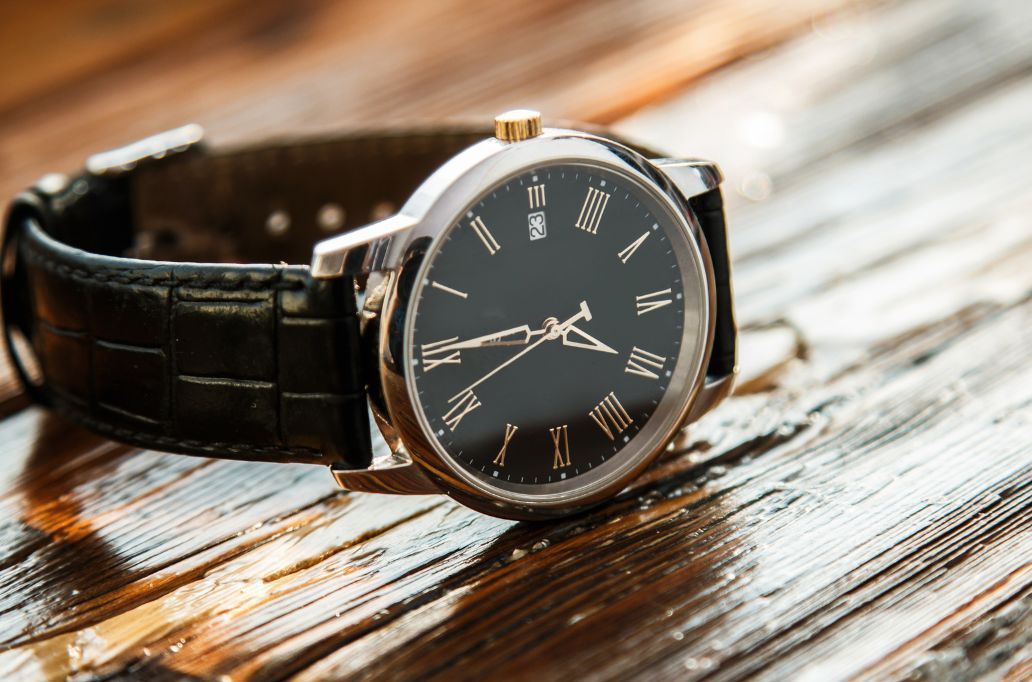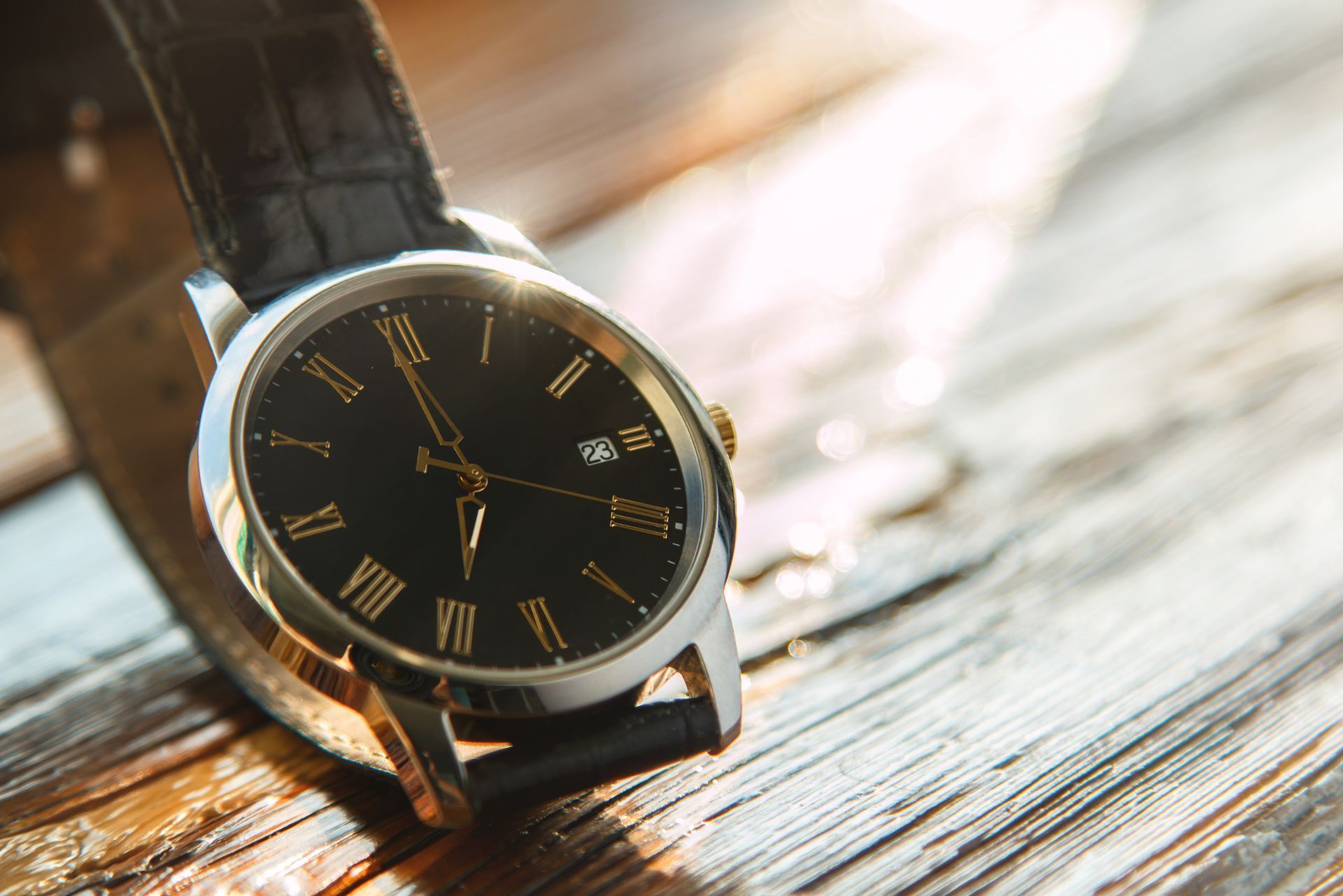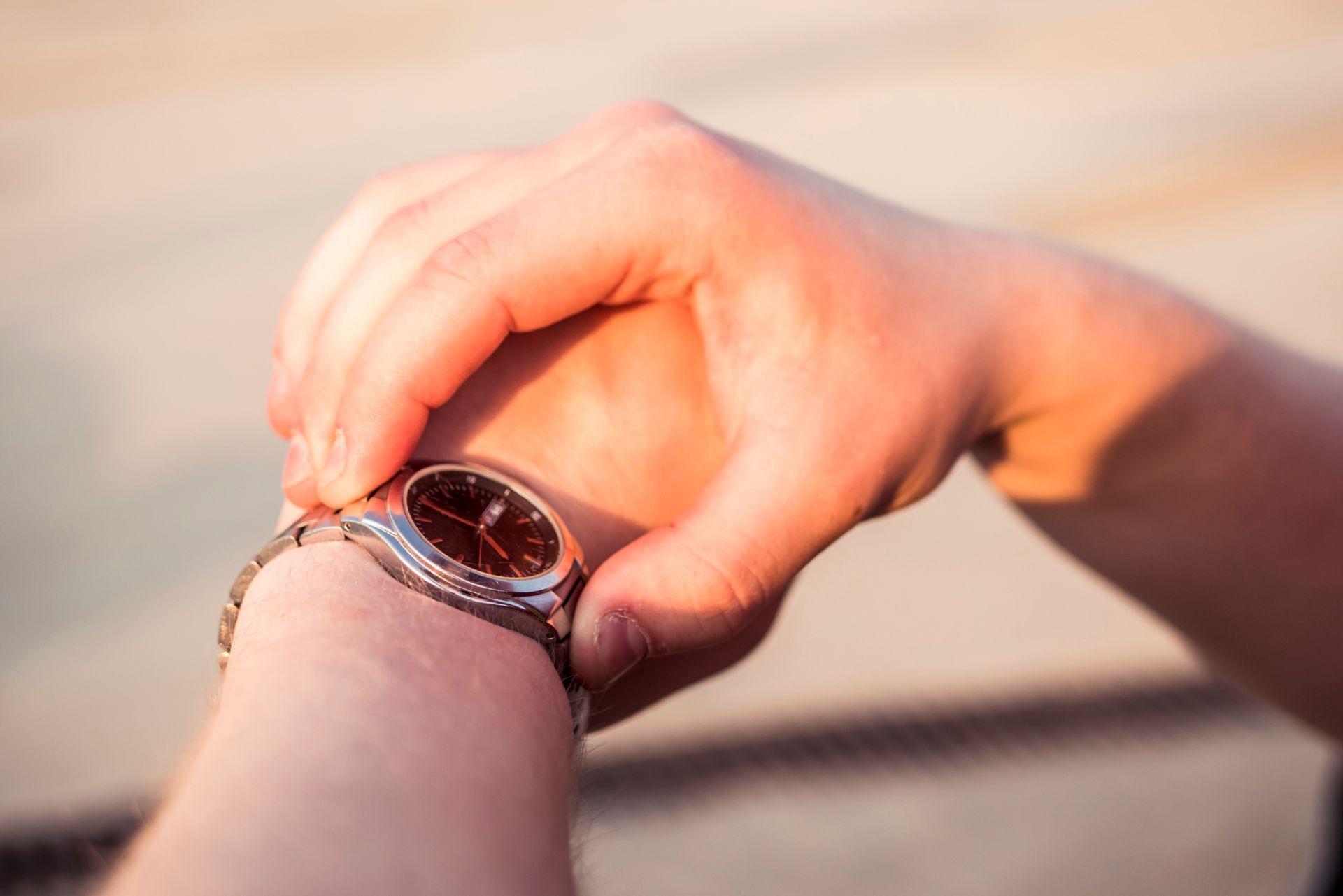
Index
In today's world, where personal belongings often hold significant value, protecting them has become a priority for many. One such item that deserves special attention is a watch.
Michigan watch insurance is designed to provide coverage for your timepieces, ensuring they are protected against theft, loss, or damage. This article will delve into the intricacies of watch insurance in Michigan, exploring its importance, types, coverage options, and how to choose the best policy for your needs.
Understanding Watch Insurance
Watch insurance is a specialized form of coverage that protects your watches from various risks. Unlike standard homeowners or renters insurance, which may offer limited coverage for personal belongings, watch insurance is tailored specifically for high-value timepieces. This specialized coverage ensures that your investment is adequately protected, giving you peace of mind.
Why Consider Watch Insurance?
The primary reason for considering watch insurance is the significant financial investment that luxury watches often represent. Many individuals own watches that are not only valuable in monetary terms but also hold sentimental value. Whether it's a family heirloom or a gift from a loved one, losing such a piece can be devastating.
Additionally, the watch market has seen a surge in value over the years. Collectors and enthusiasts are increasingly investing in timepieces, making it essential to protect these assets. Watch insurance provides coverage against theft, accidental damage, and even loss, ensuring that you can recover your investment in case of an unfortunate event. The emotional attachment to these pieces often makes the financial aspect even more critical, as the loss of a watch can feel like losing a part of one's personal history.
What Does Watch Insurance Cover?
Watch insurance typically covers a range of incidents, including:
- Theft: If your watch is stolen, your insurance policy can help you recover its value.
- Accidental Damage: Whether it's a drop or a scratch, insurance can cover repair costs or replacement.
- Loss: If your watch goes missing, certain policies may offer compensation.
It's important to read the fine print of any policy to understand the specific coverage details, exclusions, and limits. Some policies may also offer additional coverage for specific events, such as travel-related loss or damage. For instance, if you frequently travel with your watch, you might want to look for a policy that includes worldwide coverage, ensuring that your watch is protected no matter where you are. Furthermore, some insurers may provide options for appraisals and regular assessments, allowing you to adjust your coverage as your watch's value appreciates over time.
Moreover, many watch insurance policies also offer a range of additional services that can enhance your experience as a watch owner. For example, some insurers provide access to a network of trusted watch repair specialists, ensuring that any necessary repairs are handled by professionals who understand the intricacies of luxury timepieces. This not only guarantees quality workmanship but also helps maintain the watch's value. Additionally, certain policies may include coverage for accessories, such as original boxes or documentation, which can be crucial for collectors looking to preserve the complete history and provenance of their watches.

Types of Watch Insurance Policies
When considering watch insurance, it's essential to understand the different types of policies available. Each type caters to varying needs and circumstances, allowing you to choose the best fit for your collection.
Standalone Watch Insurance
Standalone watch insurance policies are specifically designed to cover watches. These policies typically offer comprehensive coverage, including theft, loss, and damage. They are ideal for individuals who own high-value timepieces and want dedicated protection without relying on homeowners or renters insurance. Additionally, many standalone policies also cover accidental damage, which can be a significant advantage for those who wear their watches daily. This type of insurance often allows for the inclusion of coverage for watch repairs and servicing, ensuring that your investment remains in pristine condition over time.
Inland Marine Insurance
Inland marine insurance is a type of policy that covers personal property while it is in transit or temporarily stored away from your primary residence. This can be an excellent option for collectors who frequently travel with their watches or store them in different locations. Inland marine insurance can provide broader coverage than standard policies, making it a suitable choice for valuable watches. Moreover, this type of insurance often covers items that are not typically included in standard homeowners policies, such as watches that are being transported to a watchmaker for repairs or those being showcased at exhibitions. This flexibility can be particularly beneficial for avid collectors who attend trade shows or conventions.
Homeowners or Renters Insurance Add-Ons
Many homeowners and renters insurance policies offer the option to add coverage for high-value items, including watches. While this can be a more affordable option, it may not provide the same level of protection as standalone watch insurance. It's crucial to evaluate the limits and exclusions of these add-ons to ensure they meet your needs. Furthermore, these add-ons often come with a cap on the amount you can claim for any single item, which may not be sufficient for luxury watches. It's advisable to assess the total value of your collection and compare it against the policy limits to avoid potential gaps in coverage. Additionally, some insurers may require an appraisal or detailed documentation of your watches to ensure adequate protection, making it essential to keep thorough records of your collection.
Factors to Consider When Choosing Watch Insurance
Selecting the right watch insurance policy requires careful consideration of several factors. Understanding these elements can help ensure you choose a policy that adequately protects your investment.
Value of Your Watch
The first step in choosing watch insurance is determining the value of your timepiece. This involves getting an appraisal from a certified watchmaker or jeweler, especially for high-end or vintage models. Accurate valuation is critical, as it will dictate the coverage amount and premiums. Additionally, it’s wise to keep documentation of the appraisal and any purchase receipts, as these can be invaluable during the claims process. The value of luxury watches can fluctuate due to market demand, so consider re-evaluating your watch periodically to ensure your insurance coverage remains adequate.
Coverage Limits and Deductibles
It's essential to review the coverage limits and deductibles of any policy you are considering. Coverage limits refer to the maximum amount the insurer will pay in the event of a claim, while deductibles are the out-of-pocket expenses you must pay before the insurance kicks in. Finding a balance between a reasonable premium and adequate coverage is key. Some policies may offer a lower premium with higher deductibles, which could be beneficial if you are confident in your ability to avoid loss or damage. Conversely, if your watch is particularly valuable, opting for a policy with lower deductibles might provide peace of mind in case of unexpected incidents.
Exclusions and Restrictions
Every insurance policy comes with its exclusions and restrictions. Common exclusions may include wear and tear, damage from natural disasters, or loss due to negligence. Understanding these limitations will help you gauge the effectiveness of the policy in protecting your watch. Additionally, some policies may require specific storage conditions or maintenance practices to remain valid, so be sure to inquire about these details. It’s also beneficial to read reviews or seek recommendations from other watch owners to learn about their experiences with various insurers and the claims process, which can provide further insight into how well a policy might serve your needs.
The Process of Insuring Your Watch
Insuring a watch involves several steps, from evaluating its value to filing a claim if necessary. Familiarizing yourself with this process can simplify your experience and ensure you are adequately covered.
Getting an Appraisal
Before purchasing watch insurance, obtaining a professional appraisal is crucial. An appraiser will assess the watch's condition, brand, model, and market value. This appraisal serves as a basis for determining the coverage amount and premium. Additionally, it’s important to keep in mind that the value of luxury watches can fluctuate over time due to market trends and demand. Regular appraisals, perhaps every few years, can help ensure that your coverage remains adequate and reflective of the current market value, protecting you from any potential financial loss.
Choosing an Insurer
Once you have an appraisal, the next step is selecting an insurance provider. Research various companies that specialize in jewelry and watch insurance. Look for reviews, customer service ratings, and their claims process to ensure you choose a reputable insurer. It may also be beneficial to consult with fellow watch enthusiasts or collectors for recommendations, as they often have firsthand experience with different insurers. Some companies may offer specialized policies that cater to collectors, including coverage for multiple watches or unique features like worldwide coverage, which can be particularly useful if you travel frequently.
Filing a Claim
In the unfortunate event that you need to file a claim, understanding the process is essential. Most insurers require documentation, such as the original purchase receipt, appraisal, and any police reports in case of theft. Familiarize yourself with the claims process outlined by your insurer to ensure a smooth experience. Additionally, keeping a detailed record of your watch, including photographs and descriptions of any unique features or modifications, can expedite the claims process. Being proactive in documenting your watch's condition and any relevant details can greatly assist in substantiating your claim, should the need arise.

Common Myths About Watch Insurance
Despite the growing awareness of watch insurance, several myths persist that can lead to misunderstandings about its importance and functionality. Debunking these myths can help individuals make informed decisions regarding their watch protection.
Myth 1: Homeowners Insurance is Enough
Many believe that their homeowners insurance adequately covers their watches. While it may offer some protection, the coverage limits are often insufficient for high-value timepieces. Specialized watch insurance provides tailored coverage that homeowners insurance typically lacks. For instance, homeowners policies often include deductibles that can be quite high, meaning that in the event of a claim, the out-of-pocket expense could negate any benefits received. Furthermore, certain types of damage, such as accidental drops or water damage, may not be covered under a standard homeowners policy, leaving watch owners vulnerable to significant financial loss.
Myth 2: Insurance is Too Expensive
While the cost of insurance can vary, many individuals find that the peace of mind it provides outweighs the expense. Additionally, the cost of replacing a lost or damaged watch can be significantly higher than the annual premium for insurance. It's essential to view insurance as an investment in protecting your valuable assets. Many insurers offer flexible payment plans and discounts for bundling policies, making it more accessible than one might think. Furthermore, the emotional value attached to a watch, especially if it’s a family heirloom or a gift from a loved one, makes the cost of insurance a small price to pay for the assurance that it can be replaced or repaired if something goes wrong.
Myth 3: All Policies are the Same
Not all watch insurance policies are created equal. Coverage options, limits, and exclusions can vary significantly between insurers. It's crucial to shop around and compare policies to find one that best meets your specific needs. Some policies may offer worldwide coverage, while others might restrict protection to specific locations. Additionally, certain insurers provide coverage for loss due to theft, while others may not cover this risk at all. Understanding the nuances of each policy can empower watch owners to select the best option, ensuring that their prized possessions are adequately protected against a variety of potential risks.
Tips for Maintaining Your Watch
While insurance is essential for protecting your watch, proper maintenance can also play a significant role in preserving its value. Here are some tips to keep your timepiece in excellent condition.
Regular Servicing
Just like any mechanical device, watches require regular servicing to function optimally. Many manufacturers recommend servicing every three to five years, depending on the watch's complexity and usage. Regular maintenance can help identify potential issues before they become significant problems. During a service, a professional will typically clean the movement, lubricate the necessary components, and replace any worn parts, ensuring that your watch continues to operate accurately and smoothly. Additionally, keeping a record of all service work can enhance the watch's resale value, as it demonstrates that the timepiece has been well cared for over the years.
Proper Storage
When not in use, watches should be stored in a cool, dry place away from direct sunlight. Consider using a watch box or case to protect them from dust and scratches. For automatic watches, a watch winder can help keep them running smoothly when not worn. It's also wise to avoid storing your watch near strong magnetic fields, such as those produced by speakers or electronic devices, as these can interfere with the movement and accuracy of the watch. If you own multiple watches, rotating them regularly not only gives each piece a chance to shine but also helps prevent the lubricants inside from settling, which can lead to performance issues.
Be Mindful of Water Resistance
If your watch is water-resistant, it's essential to understand its limits. Regularly check the seals and gaskets to ensure they remain intact, especially if you frequently expose your watch to water. Avoid wearing it in situations that exceed its water resistance rating. It's also a good practice to have the water resistance tested periodically, especially if the watch has been subjected to impacts or has been worn in extreme conditions. Remember, even a watch rated for water resistance can be compromised if the crown or case back is not properly secured. After swimming or exposure to saltwater, rinse your watch with fresh water to remove any residue that could potentially damage the seals.
Conclusion
Michigan watch insurance is a valuable consideration for anyone who owns high-value timepieces. Understanding the various types of policies, coverage options, and the steps involved in insuring your watch can help ensure your investment is adequately protected. By debunking common myths and implementing proper maintenance practices, individuals can enjoy their watches with peace of mind, knowing they are safeguarded against unforeseen events.
As the world of luxury watches continues to evolve, so too does the need for specialized insurance coverage. Whether you are a collector, enthusiast, or simply someone who cherishes a valuable timepiece, investing in watch insurance is a wise decision that can provide both financial protection and peace of mind.

